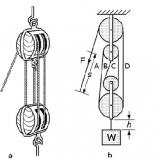Electric Multicopter Manned Flight 11105
The e-volo Corporation (GmbH): Development, marketing and sales of the volocopter. Stephan Wolf (CEO) got to know Thomas Senkel (CTO) in an internet forum in a discussion on quadrocopters. Thomas Senkel specializes in the development of electric drives and the construction of ultra light vehicles. Alexander Zosel (CEO), a visionary entrepreneur and inventor, was sold on the idea of rescaling the model to the size of a manned aircraft too.
Together, the innovators invented and built the volocopter in a process that took over 2 years. e-volo is the winner of the 2012 Lindbergh Prize for Innovation
Erik Lindbergh, grandson of Charles and Anne Morrow Lindbergh, announced the 2012 winner of the Lindbergh Prize. The Lindbergh Foundation’s aviation prizes are designed to recognize and stimulate innovation, and promote meaningful advancements in green aviation.
“We believe that the development of the Volocopter holds significant promise to radically change short distance transportation,” said Erik Lindbergh. “It has a long development path ahead, but if this innovative design reaches the commercial market it will dramatically change the way we move about the planet.”
What is a Volocopter?
The Volocopter by e-volo is a completely novel, vertical take-off and landing (VTOL) manned aircraft, which cannot be classified in any known category. The fact that it was conceived of as a purely electrically powered aircraft sets it apart from conventional aircraft.
Through the use of its many propellers, the Volocopter can take off and land vertically like a helicopter. A considerable advantage, apart from the simple construction without complex mechanics, is the redundancy of drives. This enables the safe landing of the volocopter even if some drives fail.
How Does the Volocopter Work?
The controls work according to the fly-by-wire principle very easily by means of a joystick. As opposed to any other aircraft, the operation is child’s play. It takes off and lands vertically and the pilot pays little or no attention to the flight path angle, minimum speed, stall, mixture control, pitch adjustment and many other things which make conventional aviation so demanding.
The propellers generate the entire ascending force, and by means of a selective change in rotary speed they simultaneously take care of the steering. Furthermore, as opposed to helicopters, no mechanical pitch control of the propellers is necessary whatsoever.
The automatic position control and the directional control take place by means of several independent and mutually monitoring airborne computers which control the rotation speed of each drive separately.
An optional, additional pusher propeller enables an even faster flight.
How Does the Volocopter Work?
The controls work according to the fly-by-wire principle very easily by means of a joystick. As opposed to any other aircraft, the operation is child’s play. It takes off and lands vertically and the pilot pays little or no attention to the flight path angle, minimum speed, stall, mixture control, pitch adjustment and many other things which make conventional aviation so demanding.
The propellers generate the entire ascending force, and by means of a selective change in rotary speed they simultaneously take care of the steering. Furthermore, as opposed to helicopters, no mechanical pitch control of the propellers is necessary whatsoever.
The automatic position control and the directional control take place by means of several independent and mutually monitoring airborne computers which control the rotation speed of each drive separately.
How Long Can The Volocopter Fly?
Currently, the limiting factor is the energy capacity of available batteries. However, a considerable advancement in battery technology is conceivable during the next few years, so that a multiplication of the energy capacity will occur within a short period of time. At present a battery flight time of 20 minutes is possible, but in the near future this will be extended to one hour or more.
To enable a flight time of several hours right from the start, our two-seater Volocopter is being developed as a serial hybrid electrical aircraft with a range extender.
A range extender is an additional aggregate in an electrical vehicle which extends the range of the vehicle considerably. The most commonly used range extenders are combustion motors which power a generator that supplies the batteries and electrical engines with electricity. Range extenders run at a constant rotation speed with optimal efficiency.




